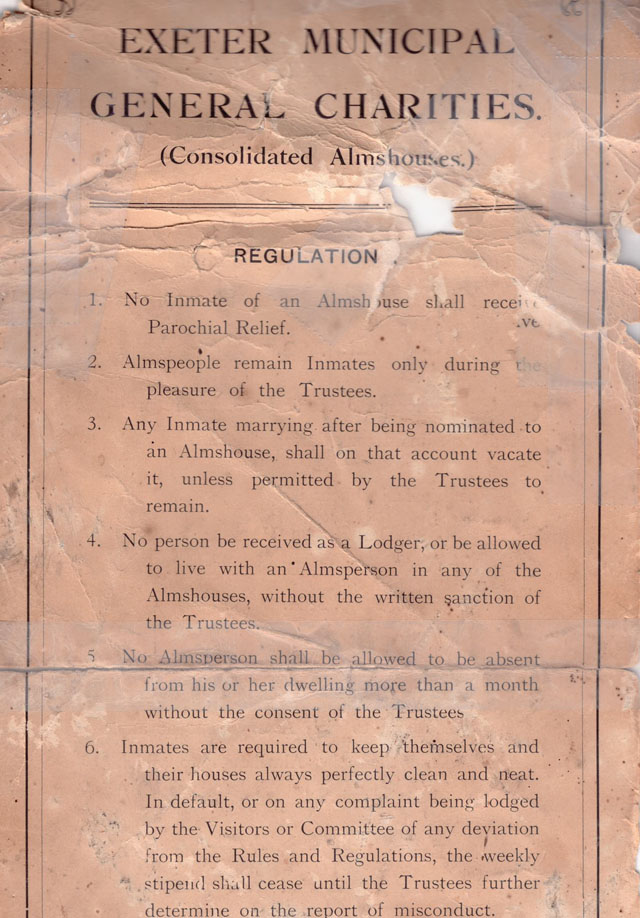Community researcher – Jayne Bray
According to The Almshouse Association, there have been almshouses, originally called hospitals or bede houses, in the United Kingdom for more than 1,000 years. The first were founded in 990 in Worcester. In Exeter, St Mary Magdalene is believed to have been founded in the early eleventh century. Almshouses may be referred to as a college, hospital or homes.
Trusts for almshouses were generally founded by benefactors who came from all walks of life. They were provided for ‘the deserving poor’ such as weavers, victuallers, clergymen and widows. During the Victorian era, housing became a huge social problem with poor conditions in workhouses. Philanthropists were inspired to endow almshouses in their local areas. The houses were often constructed in groups of 6 to 12 dwellings.
Exeter’s almshouses are named after the original benefactors such as Lawrence Atwill, John Palmer, Kent Kingdon and Thomas Flaye. These are splendid historic buildings but there are also post war and modern dwellings.Wynard’s Almshouses were built in the early 1400s and were converted to private residential accommodation after the upkeep became prohibitive.
Almshouses are still managed by volunteer trustees who fulfil the charitable aims dependent upon the wishes of the benefactors. They provide a charitable form of self sufficient, low cost housing. The majority of residents, who pay a maintenance contribution, are retired, with limited financial means. They will be from the vicinity or have a connection to the area.
